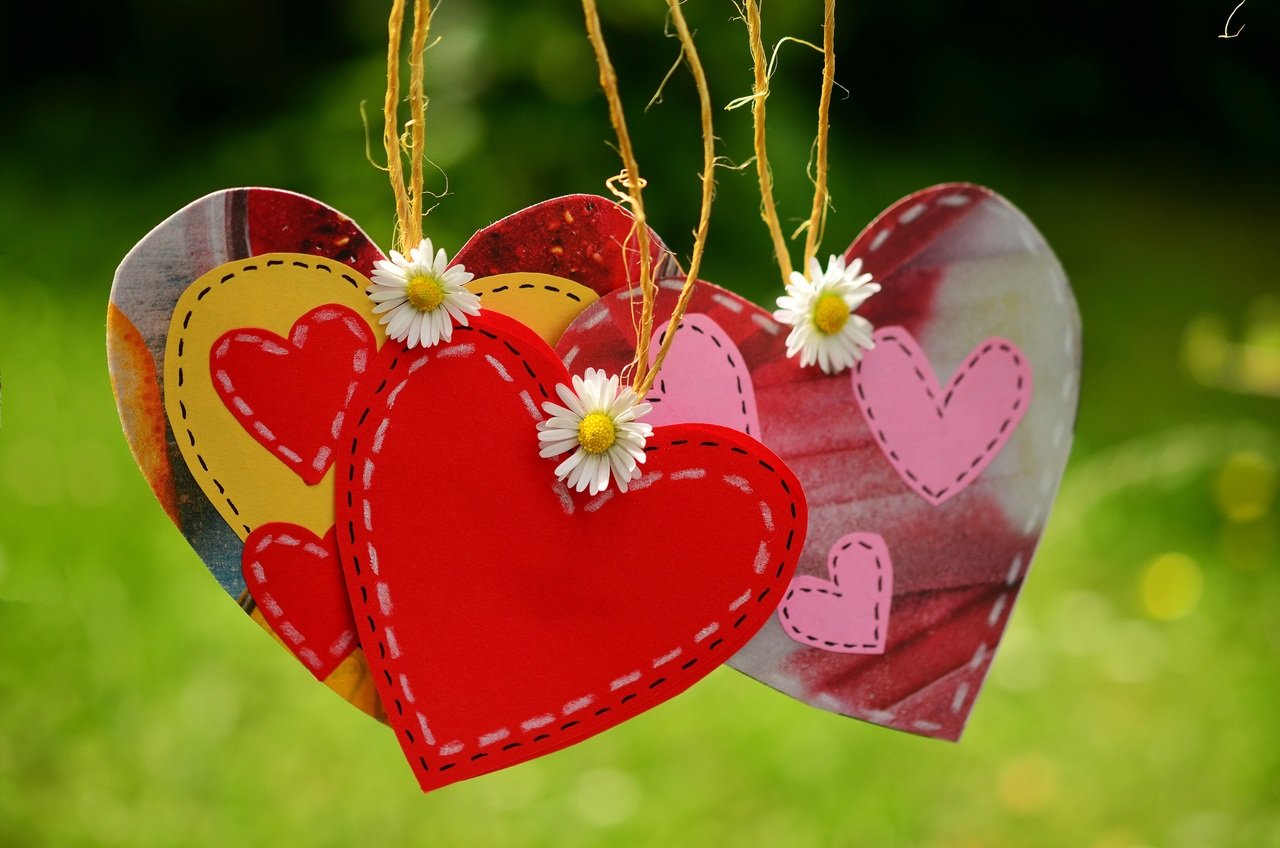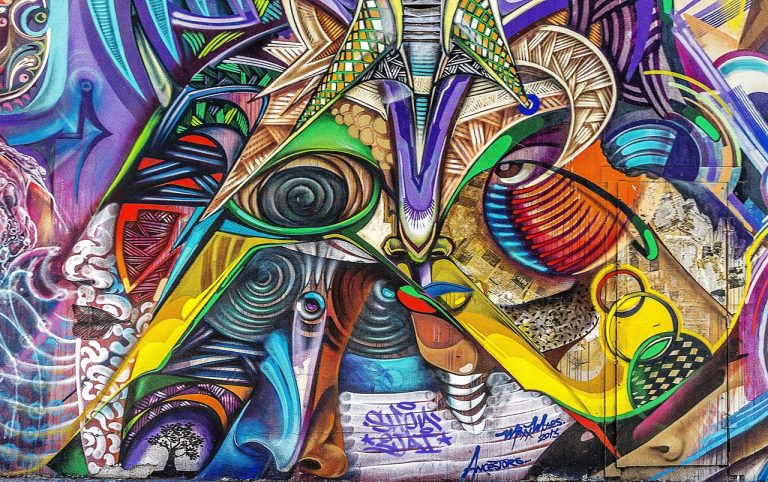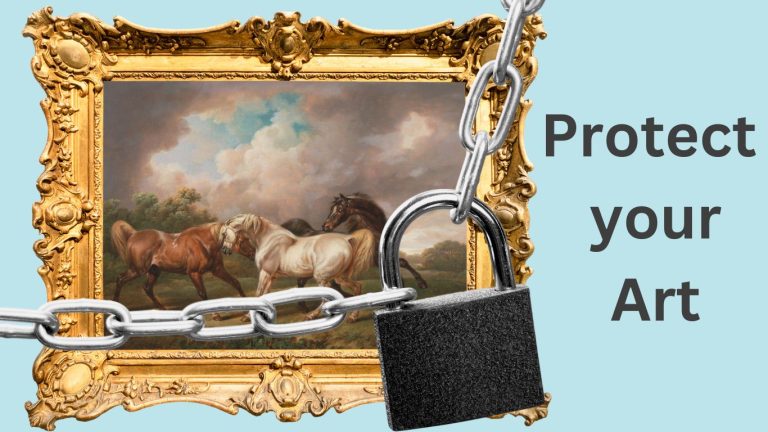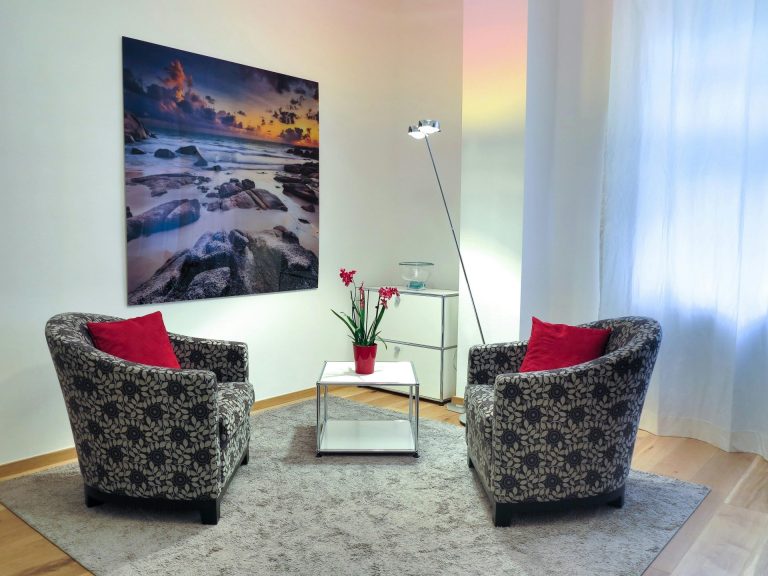What You Should Know about Art’s Impact on Mental Health
Art as Therapy: The Therapeutic Benefits of Viewing and Owning Art
Art has long been celebrated for its beauty and creativity, but did you know it also offers therapeutic benefits? Viewing and owning art can improve mental health, reduce stress, and enhance your overall well-being. Let’s explore how art can be a soothing balm for your soul.
Stress Reduction Through Visual Delight
Life can be hectic, but a piece of art can provide a serene escape. When you look at a beautiful painting, your mind can wander and relax. This visual delight can significantly reduce stress. Imagine coming home after a long day and being greeted by a calming landscape or an abstract masterpiece. The colors, forms, and textures can transport you to a peaceful place.
Art allows you to pause and take a moment for yourself. Studies have shown that viewing art can lower cortisol levels, the hormone associated with stress. So, hanging your favorite painting in your living room isn’t just for aesthetics; it’s a stress-busting tool!
Enhancing Your Emotional Well-being
Art has a unique way of connecting with your emotions. Whether it’s the vibrant hues of a Van Gogh or the serene tones of a Monet, art can evoke powerful feelings. This emotional connection can be incredibly therapeutic. It helps you process your emotions and gain new perspectives on life.
When you own art that speaks to you, it can uplift your mood every time you see it. It’s like having a daily dose of joy and inspiration. This emotional boost can help combat feelings of sadness and anxiety, making your home a haven of positivity.
Stimulating Your Mind
Engaging with art stimulates your mind and keeps it active. When you observe a painting, you might find yourself pondering its meaning or admiring the artist’s technique. This mental engagement is excellent for cognitive health. It encourages critical thinking and enhances your appreciation for creativity.
Owning art can also spark conversations and ideas. Imagine hosting a dinner party where guests discuss the intriguing artwork on your walls. It can lead to enriching conversations and connections. Art not only beautifies your space but also nourishes your intellect.
A Personalized Sanctuary
Your home is your sanctuary, and filling it with art creates a personalized space that reflects your taste and personality. This personal touch can make you feel more at home and at peace. Every piece of art you own tells a story about you and your journey.
Surrounding yourself with art that resonates with you can create a comforting and therapeutic environment. It’s like wrapping yourself in a cozy blanket of creativity and inspiration. This personalized sanctuary can be a source of solace and strength during challenging times.
Art as a Mindfulness Tool
Mindfulness is about being present in the moment, and art can help you achieve this state. When you immerse yourself in a piece of art, you focus on its details and let go of distractions. This practice can enhance your mindfulness and bring a sense of calm.
Viewing art mindfully can be a form of meditation. Spend a few minutes each day gazing at your favorite painting. Notice the brushstrokes, the colors, and the emotions it evokes. This simple practice can clear your mind and reduce anxiety.
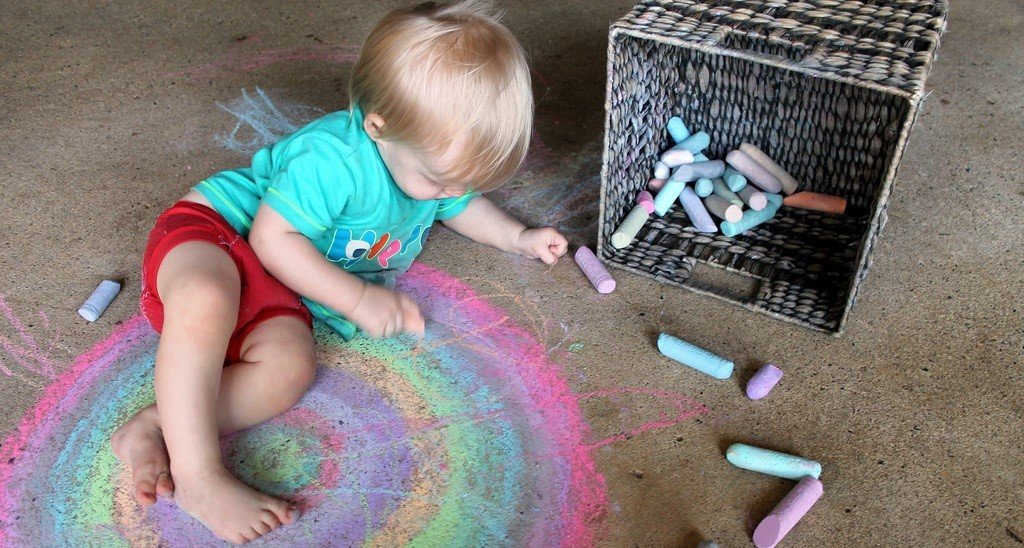
Fostering Creativity and Expression
Owning art can inspire your own creativity. Seeing how artists express their ideas and emotions can encourage you to explore your creative side. Whether you take up painting, drawing, or any other creative hobby, art can be a catalyst for your own artistic journey.
Creativity is a fantastic way to express yourself and process your thoughts and feelings. It can be a therapeutic outlet, providing relief from stress and enhancing your overall well-being. Art can ignite your imagination and open up new avenues for personal growth.
Healing Through Connection
Art has the power to connect people. When you share your favorite pieces with friends and family, it can strengthen your relationships. Discussing art can lead to meaningful conversations and deeper connections.
Visiting art galleries or museums with loved ones can also be a bonding experience. Sharing your thoughts and interpretations of the art you see can bring you closer together. Art creates a shared experience that can be both healing and enriching.
Creating a Positive Atmosphere
The art you choose to display in your home can set the tone for your environment. Bright, colorful paintings can create an uplifting and positive atmosphere. Serene landscapes or abstract pieces can bring a sense of calm and tranquility.
This positive atmosphere can influence your daily life, making you feel happier and more at ease. It can also impact the mood of anyone who enters your home, creating a welcoming and harmonious space.
Mood Enhancement: How Art Can Change the Atmosphere of a Room
Art isn’t just for decoration; it has the incredible ability to transform the mood and atmosphere of any room. Whether you’re looking to create a calm oasis or an energizing space, the right artwork can make all the difference. Let’s explore how art can enhance the mood of your home.
Setting the Tone with Color
Colors have a powerful impact on our emotions. Bright, vibrant colors can energize a room and create a lively atmosphere. Think of a bold abstract painting with splashes of red, yellow, and blue. It can make a living room feel dynamic and full of life.
On the other hand, soft, muted colors can create a sense of calm and tranquility. A landscape painting with serene blues and greens can turn a bedroom into a peaceful retreat. By choosing artwork with colors that align with the mood you want to create, you can set the perfect tone for any space.
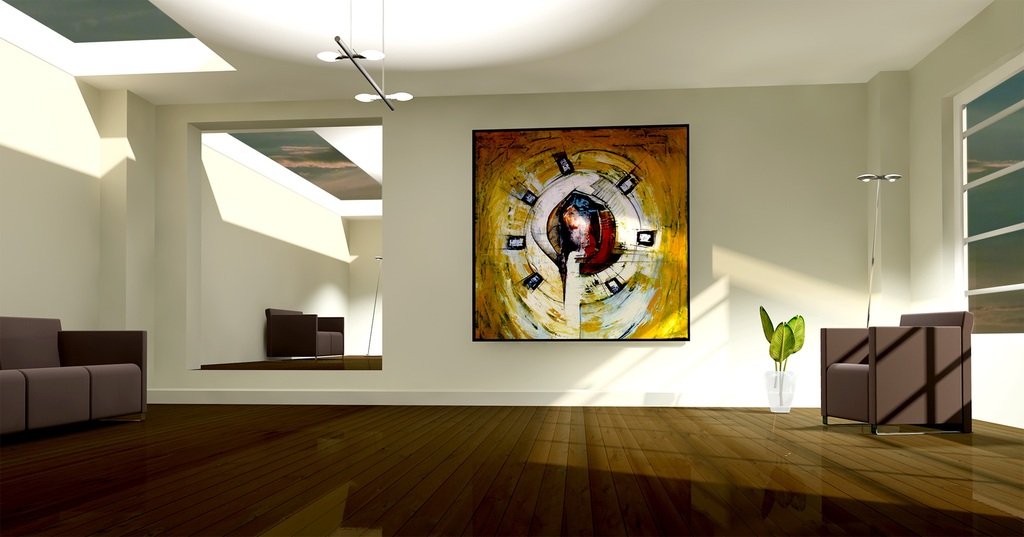
Creating a Focal Point
A striking piece of art can serve as a focal point in a room, drawing the eye and anchoring the space. This not only adds visual interest but also defines the room’s atmosphere. Imagine a large, dramatic painting above the fireplace in your living room. It instantly becomes a conversation starter and sets the mood for the entire space.
In a dining room, a beautiful still-life painting can create an elegant and sophisticated ambiance. By placing art strategically, you can guide the mood and flow of the room, making it more inviting and cohesive.
Evoking Emotions
Art has the unique ability to evoke emotions and memories. A nostalgic painting can make a space feel warm and comforting. For instance, a painting of a familiar landscape or a scene from your childhood can bring a sense of home and security.
Conversely, an adventurous, modern piece can inspire excitement and creativity. Displaying art that resonates with you personally can fill your space with positive emotions and make it feel truly yours.
Enhancing Themes and Styles
Artwork can enhance and complement the existing themes and styles of your home. If you have a minimalist, modern interior, a sleek, contemporary piece of art can add sophistication and depth. Imagine a black-and-white photograph in a stylish frame, adding elegance to your minimalist decor.
For a rustic or bohemian style, colorful, textured artworks can enhance the cozy, eclectic vibe. Think of a tapestry or a vibrant painting with earthy tones, adding warmth and character to your space.
Influencing Light and Space
Art can also influence how light interacts with a room, affecting its mood and ambiance. A painting with bright, reflective surfaces can amplify natural light, making a space feel larger and more open. Consider a vibrant seascape that reflects sunlight, adding a breezy, airy feel to your living room.
Conversely, darker, matte artworks can create a cozy, intimate atmosphere. A deep-hued portrait or abstract piece can add depth and richness to a study or reading nook, making it a perfect retreat.
Promoting Relaxation
Certain types of art are particularly effective at promoting relaxation and reducing stress. Nature scenes, for instance, can bring a sense of calm and serenity to a space. A tranquil landscape painting or a photograph of a peaceful beach can make your home feel like a retreat from the hustle and bustle of daily life.
Abstract art with soft, flowing lines can also have a soothing effect. By choosing relaxing artwork for areas where you unwind, like the bedroom or bathroom, you can create a sanctuary of peace and tranquillity.
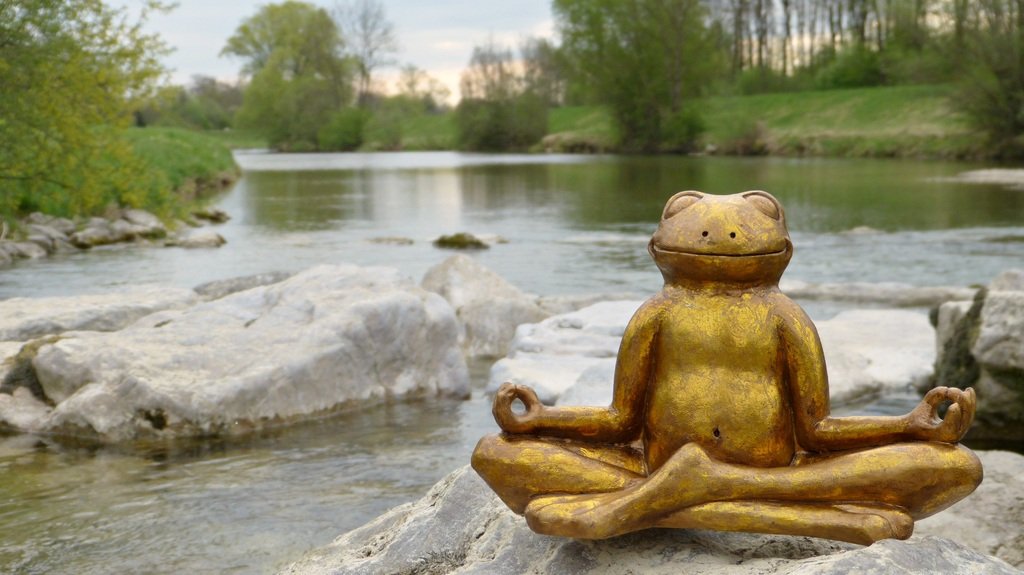
Sparking Creativity and Inspiration
Art can be a powerful source of inspiration and creativity. A dynamic, thought-provoking piece can stimulate your mind and encourage innovative thinking. Imagine a bold, abstract painting in your home office or creative space. It can ignite your imagination and fuel your creative endeavors.
Displaying art that inspires you can make your home a place of motivation and excitement. Surrounding yourself with creativity can lead to new ideas and a fresh perspective on everyday challenges.
Reflecting Personal Style
Your choice of art reflects your personal style and taste, adding a unique touch to your home. Whether you prefer classic, modern, or eclectic pieces, the art you choose tells a story about who you are. This personal connection can enhance the mood of your space, making it feel more authentic and welcoming.
By curating a collection of artwork that resonates with you, you create a home that is a true reflection of your personality. This can bring joy and satisfaction, enhancing the overall atmosphere of your living space.
Encouraging Social Interaction
Art can also encourage social interaction and conversation. A striking piece can be a great icebreaker, sparking discussions and connections. Imagine hosting a dinner party with a fascinating painting as the backdrop. Guests will naturally be drawn to it, leading to engaging conversations and shared experiences.
Art adds a layer of interest and depth to social gatherings, making your home a lively and inviting place. It fosters a sense of community and connection, enhancing the overall mood and atmosphere.
Personal Expression: Using Art to Reflect Your Personal Journey
Art is a powerful medium for personal expression, allowing you to reflect your unique experiences, emotions, and journey. Whether you’re an artist or an art enthusiast, using art to tell your story can be incredibly fulfilling. Let’s explore how you can use art to mirror your personal journey.
Art as a Mirror of Your Emotions
Art has the extraordinary ability to capture and reflect your emotions. Whether you’re feeling joy, sorrow, excitement, or calm, you can find or create art that resonates with your current state of mind. This emotional connection makes art deeply personal.
Imagine creating a painting that expresses your happiness. Bright colors, bold strokes, and lively patterns can capture that joyous energy. Or, if you’re going through a tough time, a somber, introspective piece can help you process and express your feelings. Your art becomes a mirror of your inner world, giving you a visual language to communicate your emotions.

Telling Your Story Through Art
Every piece of art tells a story, and when you use art to reflect your personal journey, it becomes a narrative of your life. You can create a series of artworks that depict significant moments, experiences, and milestones. This can be a powerful way to document your personal growth and evolution.
Consider creating a visual diary. Each artwork can represent a chapter of your life, capturing important events and memories. Over time, you’ll have a collection that tells the story of your journey. This not only allows you to reflect on your past but also gives you a tangible representation of your personal development.
Finding Art That Resonates
You don’t have to be an artist to use art for personal expression. Finding and collecting art that resonates with you can be just as powerful. Choose pieces that reflect your interests, values, and experiences. This curated collection will serve as a visual representation of your personal journey.
When you walk into a room filled with art that speaks to you, it’s like stepping into a gallery of your own life. Each piece will remind you of different aspects of your journey, making your home a deeply personal and meaningful space.
Creating a Visual Language
Art allows you to create a visual language that expresses your personal experiences. Symbols, colors, and patterns can all have unique meanings for you. By using these elements intentionally, you can develop a personal artistic vocabulary.
For instance, you might use certain colors to represent specific emotions or symbols to signify important themes in your life. This visual language can be a powerful tool for self-expression, giving you a unique way to communicate your story.
Art as a Healing Tool
Creating or engaging with art can be a therapeutic process, helping you to heal and find meaning in your experiences. Art therapy is a well-known practice that uses creative expression to improve mental and emotional well-being.
If you’re dealing with difficult emotions or experiences, creating art can provide a healthy outlet for expression. It allows you to externalize your feelings and work through them visually. This process can be incredibly healing, providing clarity and relief.
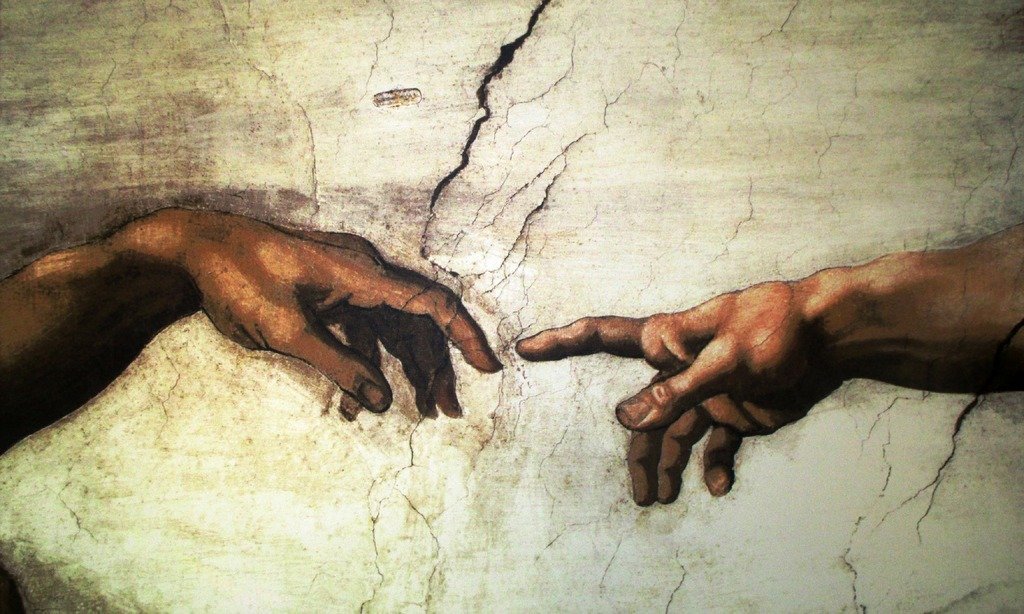
Connecting with Others Through Art
Sharing your art with others can be a way to connect and find common ground. When you express your personal journey through art, it opens up opportunities for dialogue and understanding. Others may see their own experiences reflected in your work, creating a sense of connection and empathy.
You can share your art in many ways, whether it’s through social media, exhibitions, or simply showing friends and family. This sharing can lead to meaningful conversations and deeper connections, enriching both your life and the lives of those around you.
Personalizing Your Space
Using art to reflect your personal journey adds a deeply personal touch to your living space. It transforms your home into a gallery of your life, filled with meaningful pieces that tell your story. This personalization makes your space uniquely yours.
When you surround yourself with art that reflects your journey, your home becomes a sanctuary. It’s a place where you can see your growth, celebrate your achievements, and find comfort in your memories. This personalization enhances the emotional and aesthetic value of your space.
Encouraging Personal Growth
Engaging with art can also encourage personal growth. The process of creating or collecting art can lead to self-discovery and new insights. It pushes you to explore your thoughts, emotions, and experiences more deeply.
As you reflect on your journey through art, you may gain new perspectives and a greater understanding of yourself. This self-awareness can inspire growth and change, helping you to evolve and move forward in your life.
Celebrating Your Unique Journey
Every person’s journey is unique, and art allows you to celebrate that uniqueness. By using art to reflect your personal journey, you honor your experiences and the person you’ve become. This celebration can be empowering and affirming.
Whether you’re creating your own art or curating a collection, you’re celebrating your individuality. Each piece is a testament to your unique perspective and story. This celebration of self can boost your confidence and enhance your sense of identity.
Mindfulness: The Calming Effects of Engaging with Art
Engaging with art is more than a pastime; it’s a wonderful way to cultivate mindfulness and tranquility. By immersing yourself in the world of art, you can find a peaceful retreat from the hustle and bustle of everyday life. Let’s explore how art can bring a sense of calm and mindfulness into your life.
Finding Peace in Observation
Taking the time to observe art can be a meditative experience. When you stand before a painting, sculpture, or any piece of art, allow yourself to get lost in the details. Notice the colors, the brushstrokes, and the composition. This focused observation can quiet your mind and help you stay present.
Imagine standing in front of a serene landscape painting. As you take in the gentle hues of blue and green, your mind begins to relax. The worries of the day fade away, replaced by a sense of peace and tranquility. By simply observing art, you create a moment of calm in your busy day.
Creating Your Own Art
Creating art can be a deeply mindful practice. When you paint, draw, or sculpt, you enter a state of flow where time seems to stand still. This creative process can be incredibly soothing, allowing you to express your thoughts and emotions in a safe and nurturing way.
Picture yourself sitting at a table with a blank canvas and a palette of paints. As you start to apply color to the canvas, you become fully immersed in the act of creation. Each brushstroke is a moment of focus and intention. The act of creating art becomes a form of meditation, helping you to center yourself and find inner peace.
Art as a Daily Ritual
Incorporating art into your daily routine can be a powerful way to practice mindfulness. Set aside a few minutes each day to engage with art, whether it’s through creating, observing, or even reading about it. This regular practice can help you develop a habit of mindfulness and relaxation.
Consider starting your day with a brief art session. Before the hustle of daily tasks begins, spend a few minutes sketching or coloring. This simple ritual can set a calm and focused tone for the rest of your day. Alternatively, end your day by looking at a piece of art that you love, allowing it to help you unwind and reflect.
Art and Emotional Healing
Engaging with art can also be a therapeutic practice, helping you to process and heal from emotional experiences. Art therapy is a well-known method for addressing emotional issues and promoting mental well-being. By expressing your feelings through art, you can find a sense of release and clarity.
Imagine feeling overwhelmed by emotions and turning to your art supplies. As you start to draw or paint, you pour your feelings onto the paper. The act of creating becomes a way to process your emotions, making them tangible and manageable. Through this mindful practice, you can find healing and peace.
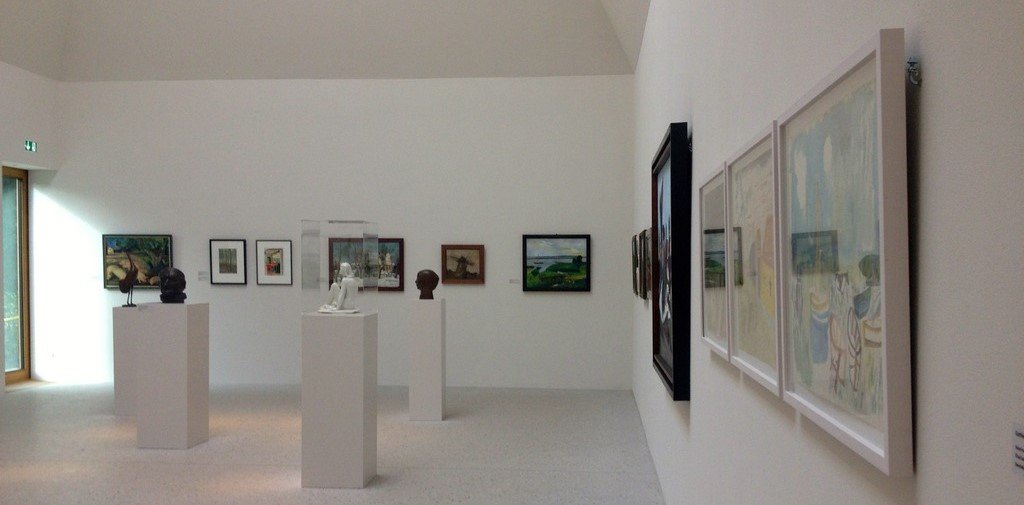
Art Galleries and Museums: A Mindful Escape
Visiting art galleries and museums can be a delightful way to practice mindfulness. Walking through the quiet halls, surrounded by beautiful and thought-provoking works of art, can be a calming and reflective experience. Take your time to appreciate each piece, allowing yourself to be fully present in the moment.
Next time you visit a museum, try to slow down and savor the experience. Stand before each artwork and let it wash over you. Notice the details and the emotions it evokes. This mindful approach to viewing art can transform a simple outing into a deeply relaxing and restorative experience.
Art in Your Personal Space
Surrounding yourself with art in your home can create a sanctuary of mindfulness and calm. Choose pieces that resonate with you and bring a sense of peace. Whether it’s a soothing landscape, a calming abstract piece, or a favorite print, the art in your home can serve as a constant reminder to slow down and be present.
Imagine walking into a room where the walls are adorned with your favorite artworks. Each piece is a visual cue to take a deep breath and relax. By curating a mindful art collection, you create a home environment that supports your well-being and tranquility.
Engaging with Art Mindfully
To fully reap the calming benefits of art, engage with it mindfully. This means being fully present and attentive when you look at or create art. Let go of distractions and immerse yourself in the experience. Notice the details, appreciate the beauty, and allow yourself to feel the emotions that the art evokes.
Next time you view art, whether in a gallery or in your own home, practice mindful observation. Focus on the here and now, and let the art guide you into a state of relaxation and awareness. This mindful engagement can help you find a deeper connection with the art and with yourself.
The Joy of Shared Art Experiences
Sharing art experiences with others can also enhance mindfulness and connection. Visit galleries with friends or family, or join an art class to create together. These shared experiences can be both joyful and calming, fostering a sense of community and mutual appreciation.
Picture yourself in an art class, surrounded by others who are equally engaged in the creative process. The room is filled with quiet concentration and the sound of brushes on canvas. This shared experience not only allows you to practice mindfulness but also builds bonds and creates a supportive environment.
Art as a Lifelong Practice
Incorporating art into your life as a regular practice can bring lasting benefits. Whether you’re creating, observing, or learning about art, make it a part of your routine. This lifelong engagement with art can continuously provide moments of calm, reflection, and joy.
Embrace art as a daily practice, and let it be a source of mindfulness and well-being. By making art a regular part of your life, you create a steady stream of opportunities for relaxation and personal growth. It’s a simple yet profound way to enhance your overall quality of life.
Art offers a beautiful and accessible way to practice mindfulness and find calm in your daily life. Whether through observation, creation, or daily rituals, engaging with art can help you cultivate a sense of peace and presence.

